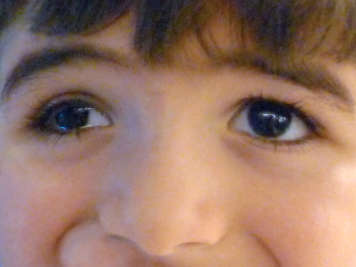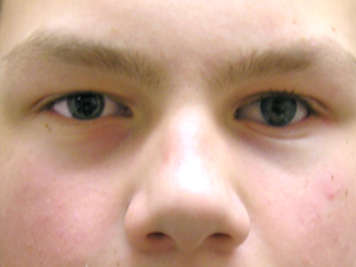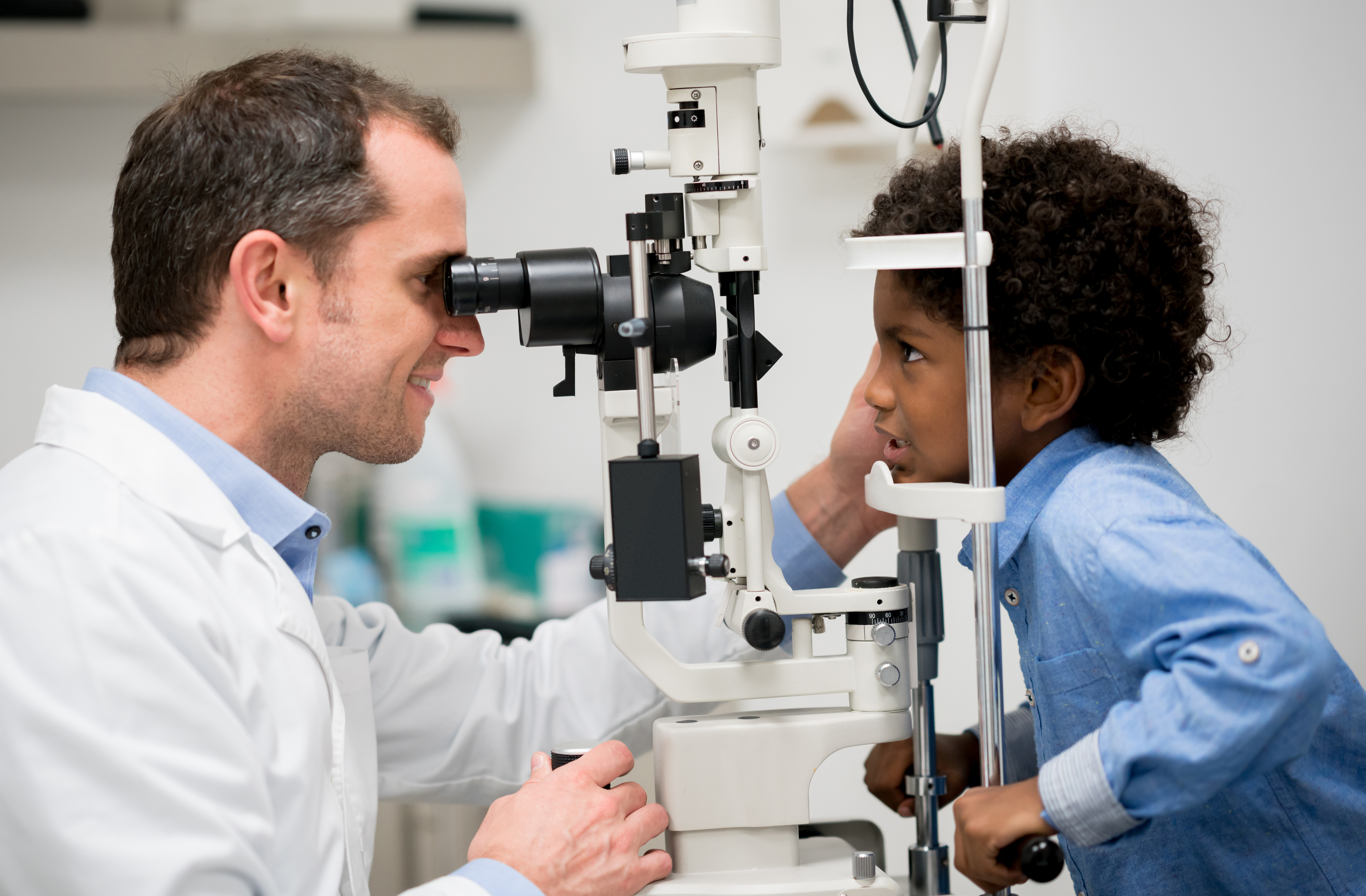Your child has had an enucleation, an operation to remove an eye. After the enucleation, your child will have a temporary, prosthetic (fake) eye. After about six weeks, they will have a long-term, custom-fitted eye.
What is a prosthetic eye?

A prosthetic eye is like a big hard contact lens or plastic shell. Your child receives this eye right after an enucleation.
The prosthetic eye helps your child's eye socket heal properly. It also helps the eyelid keep its normal shape. Your child should wear the prosthetic eye all the time while their eye socket heals.
The prosthetic eye does not normally hurt your child and can be left in place if it is not causing any problems. However, you will not hurt your child or damage the eye socket if you need to remove the eye, for example if your child's eye is sore or infected.
What is a custom-fitted eye?
A custom-fitted eye is your child's long-term artificial, or fake, eye. It is made to be an exact fit for your child's eye socket and an exact match for your child's working eye.
When will my child get their custom-fitted eye?
Your child will get their custom-fitted eye when their eye socket finishes healing after surgery. Your child's doctor will wait until all the swelling has gone down so that the eye will fit properly. This usually happens at least six to eight weeks after surgery.
How is the custom-fitted eye made?

Your child's custom-fitted eye is made by a person called an ocularist. Your child's doctor will send your child to see the ocularist when your child's eye socket has healed.
The ocularist will take a mould of your child's eye socket and use it to create the custom-fitted eye so that it matches your child's working eye. Both eyes will be the same shape and colour. The pupil of your child's custom-fitted eye will be a normal size, but, unlike in the working eye, it will not dilate (get bigger) or contract (get smaller) when the light gets brighter or darker.
How do I take care of the custom-fitted eye?
The ocularist will tell you how to care for your child's custom-fitted eye. If you have other questions about caring for the eye, visit www.artificialeyecare.com.
What happens if my child's custom-fitted eye comes out?
If the custom-fitted eye falls out, putting it back in does not hurt, but it does take time and practice at first. It is a new experience for you and your child, so both of you will probably be worried until you are used to it. Once you get familiar with it, putting it back in will be easy and painless.
How to insert the custom-fitted eye
Follow these steps carefully to replace your child's custom-fitted eye. Your child's doctor will prescribe a special eye ointment to help.
- Wash and rinse your hands thoroughly.
- Wash the custom-fitted eye with soap under running water. Rinse off the soap well.
- Put the eye ointment into the socket and on the inside of the custom-fitted eye. This will help to make the eye slide in more easily.
-

Hold the eye between the thumb and first finger of one hand. Gently pull up your child's upper eyelid with the thumb of the other hand. Make sure the eyelid is dry so that it is easy to open.
-

Slide the custom-fitted eye under your child's upper eyelid into the socket.
-

Hold the custom-fitted eye in place in the eye socket under the eyelid with your first finger. Remember that, even though it looks like a real eyeball, the custom-fitted eye is just hard plastic. You are not going to hurt your child by putting a finger on the eye.
-

Pull the lower eyelid down with your thumb so that the lower edge of the eye slides into the fold behind the lower lid. You should be able to see all of the eyelashes along the lower lid when the custom-fitted eye is in place.
Can my child remove the custom-fitted eye at night?
Your child's custom-fitted eye is designed to be worn day and night. It will take a while for your child to get used to wearing the eye, but it is better to leave it in place.
Rarely, you may have to take out the custom-fitted eye to clean it. When the eye is removed, it should be stored in plain water or a contact lens soaking solution to keep the plastic moist.
Your child's ocularist will tell you how often to clean the eye.
Is the custom-fitted eye checked after my child gets it?
The ocularist will check the custom-fitted eye regularly to make sure it is in good condition. They will look for anything that could irritate or infect your child's eye socket, such as scratches, surface deposits (such as dust), pits or roughness.
The ocularist will also see if the custom-fitted eye needs to be changed. The ophthalmologist (eye doctor) will tell you if your child needs check-ups more often.
If you have any concerns or problems with your child's custom-fitted eye, call the ocularist.
Name of ocularist: ________________________________________________
Telephone number: _______________________________________________
How long will the custom-fitted eye last?
There is no definite answer to this question. How long a custom-fitted eye lasts depends on the child's age, how fast they grow, their physical activities or condition and how well they take care of the eye.
Remember, your child will need to wear protective eye glasses to protect their good eye. These glasses look the same as any other eye glasses, but the lens is made of shatterproof material.
How do I pay for the custom-fitted eye?
In Ontario, the Assistive Devices Program (ADP) will cover 75 percent of the cost of the custom-fitted eye. The eye doctor will fill in the ADP form that you will need to give to the ocularist.
If your family has difficulty covering the rest of the cost, you can ask a social worker in the hospital for advice about other sources of funding.
